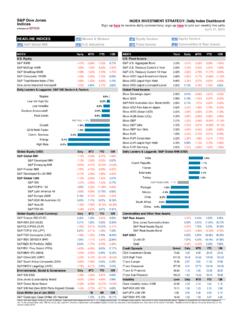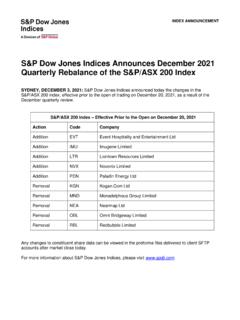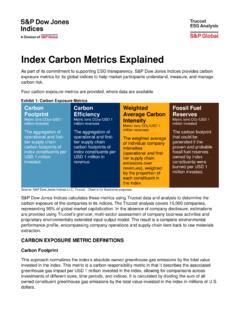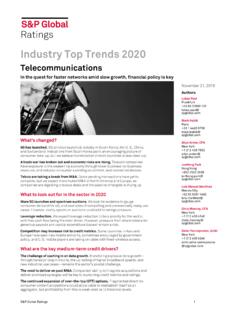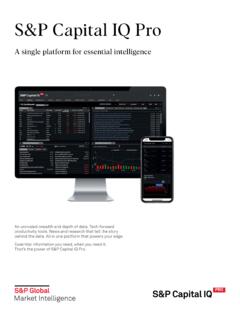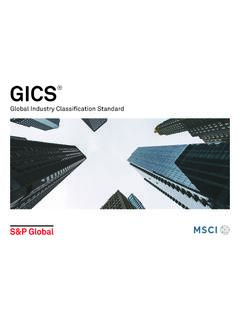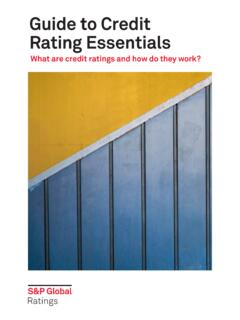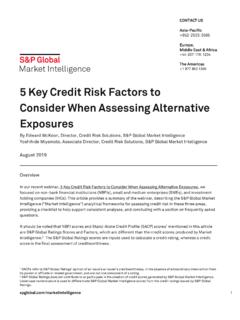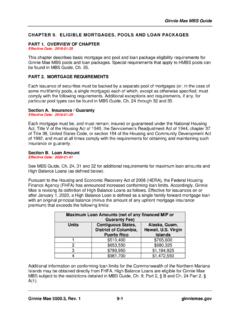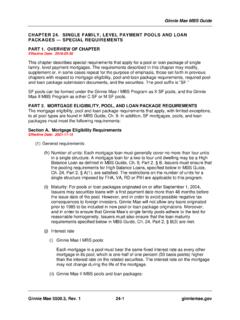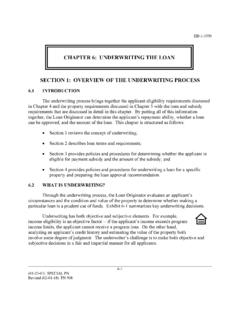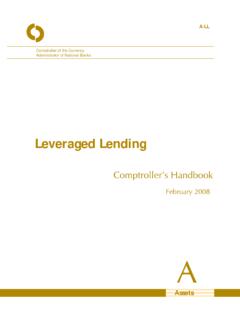Transcription of Leveraged Commentary & Data (LCD): Leveraged Loan Primer
1 Leveraged Commentary & Data (LCD): Leveraged loan PrimerTable of ContentsSyndicated Loans: The Market and the Mechanics ..1 loan Investors ..2 What Are Loans Used For? ..3 Public Versus Private ..5 Syndicating a loan by Facility ..6 Pricing a loan in the Primary Market ..6 European Investors ..7 Credit Risk ..8 Arrangers and Lender Titles ..9 The Shapes, Sizes, and Formats of Loans ..10 The Bank Book ..10 Covenants ..12 Types of Syndicated loan Facilities ..14 loan Pricing ..16 Fees ..17 Asset-Based Lending ..18 The Post-Launch Life of a loan .
2 19 Secondary Sales ..19 Prepayments/Non-call Features ..19 Amendments and Waivers ..20 Defaults and Restructuring ..20 Regulatory Issues ..22 loan ..241 Syndicated Loans: The Market and the MechanicsA syndicated loan is a commercial credit provided by a group of lenders. It is structured, arranged, and administered by one or several commercial or investment banks, known as the Leveraged buyout (LBO) boom of the mid-1980s in the , the syndicated loan market has become the dominant way for issuers around the world to tap banks and other institutional capital providers for loans.
3 The reason is simple: Syndicated loans are less expensive and more efficient to administer than traditional bilateral or individual credit the syndicated loan world, arrangers serve the time-honored investment-banking role of raising investor dollars for an issuer in need of capital. The issuer pays the arranger a fee for this service, and naturally, this fee increases with the complexity and riskiness of the loan . As a result, the most profitable loans are those to Leveraged borrowers issuers whose credit ratings are speculative grade and who are paying spreads (premiums above LIBOR or another base rate) sufficient to attract the interest of non-bank term loan investors (that rate is typically LIBOR+200 or higher, though this threshold moves up and down, depending on market conditions).
4 By contrast, large, high quality (investment grade) companies pay little or no fee for a plain vanilla loan , typically an unsecured revolving credit that is used to provide support for short term commercial paper borrowings or for working capital. In many cases, moreover, these borrowers will effectively syndicate a loan themselves, using the arranger simply to craft documents and administer the process. For Leveraged issuers, the transactions are much more complicated and theoretically more risky meaning they can be more lucrative for arrangers.
5 A new Leveraged loan can carry an arranger fee of 1% to 5% of the total loan commitment, depending on the complexity of the transaction, the strength of market conditions, and whether the loan is underwritten. The more complex the transaction and situation, the higher the fee. Thus, merger-and-acquisition (M&A) and recapitalization loans will likely carry high fees, as will bankruptcy exit financings and restructuring deals for struggling issuers. Seasoned Leveraged borrowers, in contrast, pay lower fees for refinancings and transactions where the debt is simply an add-on to an existing credit.
6 Because investment grade loans are infrequently drawn down, and therefore offer drastically lower yields, the ancillary business is as important a factor as the credit product in arranging such deals. This is especially true because many acquisition-related financings for investment grade companies are large in relation to the pool of potential investors, which would consist solely of retail market for a syndicated loan consists of banks and, in the case of Leveraged transactions, finance companies and institutional investors such as mutual funds, CLOs, hedge funds, and pension funds.
7 Before formally launching a loan to these retail accounts, arrangers will often read the market by informally polling select investors to gauge their appetite for the credit. Based on these discussions, the arranger will launch the credit at a spread and fee it believes will be attractive enough for investors. Before 1998, that would have been the full extent of deal pricing. Once the spread and fee were set, they would not change, except in the most extreme cases. As a result, if the loan were undersubscribed, the arrangers could very well be left above their desired hold level.
8 After the Russian debt crisis roiled the market in 1998, however, arrangers adopted market flex language to make loans more attractive to investors by raising the spread or lowering the price during difficult syndication processes in volatile markets. Over time, however, market flex became a tool to either increase or decrease pricing of a loan based on investor flex allows arrangers to change the pricing of the loan in some cases within a predetermined range as well as shift amounts between various tranches of a loan , as a standard feature of loan commitment letters.
9 Market flex language, in a single stroke, pushed the loan syndication process, at least in the Leveraged arena, into a full-fledged capital markets exercise. It became even more important as the Leveraged loan secondary continued to grow, as flex allowed the market to adjust deal pricing to appropriate levels in the primary market, reducing instances of major price fluctuation once a credit frees to of market flex, the syndication of a loan today functions as a book-building exercise, in bond-market parlance. Specifically, a loan is originally launched to market at a target spread or with a range of spreads referred to as price talk ( , a target spread of LIBOR+250 to LIBOR+275).
10 Investors then will make commitments that in many cases are tiered by the spread. For example, an account may put in for $25 million at LIBOR+275 or $15 million at LIBOR+250. 2 At the end of the process, the arranger will total up the commitments and then make a call on where to price, or print, the loan . Following the example above, if the paper is oversubscribed at LIBOR+250, the arranger may reduce the spread further. Conversely, if it is undersubscribed even at LIBOR+275, the arranger may be forced to raise the spread to attract additional investor Leveraged companies are owned by one or more private equity firms.
